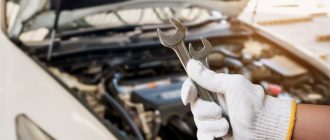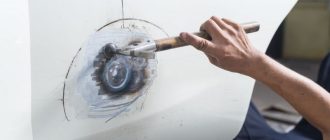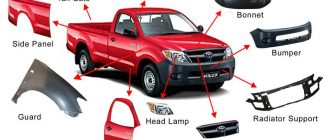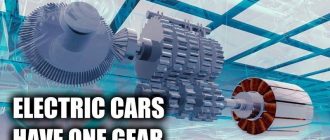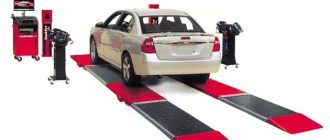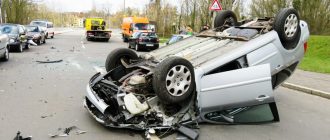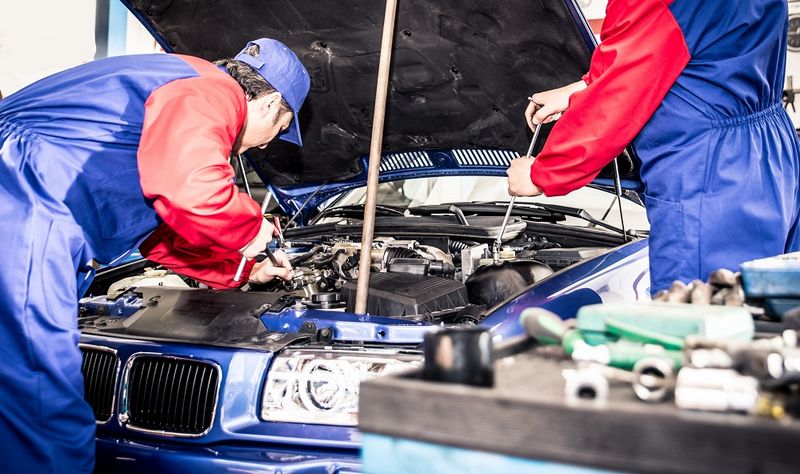
Different Types of Car Body Repairs: Features and Characteristics
When it comes to car body repair, there are various types of repairs that can be performed depending on the extent of the damage. Whether it’s a minor scratch or a major collision, understanding the different types of car body repair can help you make informed decisions about your vehicle’s restoration.
Paintless Dent Repair (PDR)
Paintless dent repair is a technique used to remove small dents and dings from the body of a car without the need for repainting. This method involves massaging the dent from the inside out, using specialized tools and techniques. PDR is an ideal choice for minor dents caused by hail, parking lot mishaps, or small collisions, as it preserves the original paint finish and maintains the vehicle’s value.
Body Filler Repair
Body filler repair, also known as conventional dent repair, is a more traditional method used to fix larger dents and damage. In this process, the damaged area is sanded down to remove the paint, and then a body filler is applied to fill in the dent. After the filler hardens, it is sanded and shaped to match the contours of the car. Finally, the repaired area is primed, painted, and clear-coated to achieve a seamless finish.
Frame Straightening
In cases of severe collision and structural damage, frame straightening is required to restore the vehicle’s structural integrity. This process involves using hydraulic tools and specialized equipment to carefully realign the frame and chassis of the car. Frame straightening requires skilled technicians and precision equipment to ensure that the vehicle is restored to its original specifications and meets safety standards.
By understanding the different types of car body repair, you can make informed decisions about the best method for restoring your vehicle after an accident. Whether it’s paintless dent repair for minor dents or frame straightening for major structural damage, professional car body repair technicians have the expertise to restore your car to its pre-accident condition.
What is body repair?
Body repair refers to the process of repairing and restoring the exterior of a vehicle that has been damaged or compromised in some way. This can include repairing dents, scratches, and other forms of damage caused by accidents, collisions, weather conditions, or general wear and tear.
Body repair is an essential part of maintaining the overall appearance and structural integrity of a vehicle. It not only improves the aesthetics of the car but also ensures that it is safe to drive and meets the necessary safety standards.
There are various techniques and methods used in body repair, depending on the extent and type of damage. Some common body repair techniques include:
- Dent Repair: This involves removing or repairing dents in the body panels of a vehicle. It can be done using various methods such as paintless dent repair, where the dents are removed without damaging the paint.
- Paint Repair: This involves repairing or repainting the damaged areas of the vehicle’s body. It can include repairing scratches, chips, or fading paint.
- Frame Repair: If the vehicle’s frame or structure is damaged, frame repair is necessary to restore its strength and integrity. This may involve straightening or replacing damaged frame components.
- Panel Replacement: In cases where the damage is extensive or irreparable, panels may need to be replaced. This can involve removing the damaged panel and fitting a new one in its place.
Body repair can be performed by professional auto body repair shops or technicians who have the necessary skills, tools, and experience. It is important to choose a reputable and qualified repair service to ensure that the repairs are done properly and the vehicle is restored to its original condition.
Overall, body repair plays a crucial role in maintaining the appearance, functionality, and safety of a vehicle. It allows car owners to address any damage or issues and restore their vehicle’s aesthetics and performance.
Goals of body repair
When it comes to car body repair, the main goals are to restore the vehicle’s appearance, functionality, and safety. Whether the damage is due to a collision, rust, or other factors, the primary aim is to fix the affected areas and bring the car back to its original condition.
Here are the key goals of body repair:
| 1. Cosmetic restoration | The first goal of body repair is to restore the car’s appearance. This involves fixing dents, scratches, and other cosmetic damages to make the car look as good as new. Techniques such as paintless dent repair, touch-up painting, and panel replacement are commonly used to achieve this goal. |
| 2. Structural repair | Another important goal is to repair any structural damage to ensure the vehicle’s functionality and safety. This includes fixing bent or damaged frames, aligning suspension components, and replacing damaged structural parts. Structural repairs are crucial to maintain the car’s structural integrity and ensure it is safe to drive. |
| 3. Rust repair | Rust is a common problem in older vehicles and can significantly affect their appearance and structural integrity. The goal of rust repair is to remove the rusted areas, treat the affected metal, and restore the car’s original condition. This may involve cutting out rusted sections and welding in new metal, applying rust inhibitors, and repainting the affected areas. |
| 4. Cost-effectiveness | While the primary goals of body repair are to restore the car’s appearance and functionality, it is also important to consider cost-effectiveness. Repair techniques should be chosen based on their efficiency and affordability. Repairing rather than replacing parts, utilizing less expensive repair methods, and finding cost-effective solutions are essential for achieving the desired goals without exceeding the budget. |
Overall, the goals of car body repair are to restore the vehicle’s appearance, ensure its functionality and safety, address rust issues, and do so in a cost-effective manner. By achieving these goals, body repair professionals can help car owners get their vehicles back on the road in optimal condition.
Repair process specifics
When it comes to repairing car body damage, there are several specific steps involved in the process. These steps may vary depending on the extent of the damage and the type of repair required. Here are some common repair process specifics:
- Assessment: The first step in the repair process is assessing the damage. A trained technician will thoroughly inspect the damaged area to determine the extent of the damage and the best course of action.
- Estimation: Once the assessment is complete, an estimate of the repair cost will be provided. This estimate includes the cost of parts, labor, and any additional services required.
- Disassembly: Before the repair work can begin, the damaged area may need to be disassembled. This allows technicians to gain access to the underlying components and assess any hidden damage.
- Repair: Depending on the extent of the damage, the repair process may involve various techniques. This can include straightening and reshaping damaged panels, welding, filling in dents, and replacing damaged parts.
- Painting: Once the repairs are completed, the damaged area will be prepared for painting. This involves sanding, priming, and applying multiple layers of paint to match the original color of the vehicle.
- Reassembly: After painting, the repaired area will be reassembled with any necessary components. This includes attaching panels, lights, and other trim pieces.
- Quality control: Before the vehicle is returned to the owner, a thorough quality control inspection is conducted. This ensures that the repairs have been completed to a high standard and that the vehicle is safe to drive.
It’s important to note that the repair process specifics can vary depending on the repair facility and the specific requirements of each repair job. However, these are some general steps that are typically followed in the car body repair process.
Body repair equipment
When it comes to repairing car body damage, having the right equipment is crucial. There are several types of body repair equipment that are commonly used by professionals in the industry. These tools help to ensure that the repairs are done accurately and efficiently.
One of the most essential pieces of body repair equipment is the paint booth. This enclosed space is used for painting and drying the repaired areas of the car. It helps to maintain a clean and controlled environment, ensuring a high-quality finish.
Another important tool is the frame machine. This equipment is used to straighten and align the damaged frame of a vehicle. It allows the technician to accurately measure and realign the frame, ensuring that the structural integrity of the vehicle is restored.
Dent repair tools are also commonly used in body repair. These include items such as dent pullers, dent rods, and dent hammers. These tools are used to remove dents and dings from the body of the car, restoring its original shape.
Additionally, body repair equipment often includes tools for sanding, grinding, and polishing. These tools help to smooth out any rough or uneven areas on the repaired surface, ensuring a seamless finish.
In conclusion, body repair equipment plays a vital role in the car repair process. From paint booths to frame machines and dent repair tools, these tools help professionals to accurately and efficiently repair car body damage.
What does car body refinishing involve?
Car body refinishing is a process that involves restoring the appearance of a vehicle’s exterior to its original condition. It typically includes repairing any scratches, dents, or other damage on the car’s body and applying a fresh coat of paint to achieve a smooth and uniform finish.
The process of car body refinishing starts with a thorough inspection of the vehicle’s body to assess the extent of any damage. This may involve identifying any dents, scratches, or areas where the paint has chipped off. Once the damage has been assessed, the repair process can begin.
Minor scratches and dents can often be repaired using various techniques such as sanding, filling, and buffing. This involves carefully sanding down the damaged area, applying filler to smooth out any imperfections, and then buffing the surface to restore its original shine.
In cases where the damage is more severe, additional steps may be required. This can include using specialized tools to reshape and pull out dents, or even replacing damaged panels altogether. The goal is to ensure that the repaired areas match the rest of the car’s body seamlessly.
After the repairs have been completed, the next step in car body refinishing is applying a fresh coat of paint. This can involve several stages, including priming the surface, applying base coat color, and then adding a clear coat for protection and a glossy finish. Each layer of paint needs to be applied evenly and allowed to dry before moving on to the next step.
Car body refinishing requires skill, precision, and attention to detail in order to achieve a high-quality result. It is often performed by professional auto body technicians who have the knowledge and experience to properly assess and repair any damage to a vehicle’s body. By restoring the exterior of a car to its original condition, car body refinishing can greatly improve its overall appearance and value.
Surface preparation
Surface preparation is a crucial step in car body repair, as it ensures that the paint adheres properly and provides a smooth finish. There are several key steps involved in surface preparation:
Cleaning: The first step is to thoroughly clean the damaged area using a degreaser or a mild detergent. This removes any dirt, grease, or wax that may be present on the surface.
Sanding: After cleaning, the damaged area is sanded using sandpaper or a sanding block. This helps to remove any rust, old paint, or imperfections on the surface. Sanding also creates a rough texture, which allows the new paint to adhere better.
Priming: Once the surface is sanded, a primer is applied. The primer helps to seal the surface and provides a smooth base for the paint. It also helps to prevent rust and corrosion from forming on the metal surface.
Filling: If there are any dents or scratches, they are filled using a body filler or putty. This helps to level out the surface and provides a smooth finish.
Masking: Before painting, the surrounding area is masked off using tape and plastic sheets. This protects the unaffected areas from overspray and ensures a clean paint job.
Cleaning again: Finally, the repaired area is cleaned once more to remove any dust or debris that may have accumulated during the surface preparation process. This ensures a clean surface for the paint application.
Overall, proper surface preparation is essential for achieving a high-quality car body repair. It helps to ensure that the paint adheres correctly, provides a smooth finish, and helps to prevent future damage or corrosion.
Paint selection
When it comes to car body repair, selecting the right paint is crucial. The paint not only enhances the appearance of your vehicle but also protects it from external elements.
There are various factors to consider when choosing the paint for your car body repair:
1. Color: The color of the paint should match the original color of your vehicle. This ensures a seamless repair and maintains the overall aesthetics.
2. Finish: The finish of the paint can be glossy, satin, or matte. Choose a finish that complements the style of your vehicle and meets your personal preferences.
3. Quality: Opt for high-quality paint to ensure durability and longevity. A good quality paint will withstand environmental factors and provide long-lasting protection to your vehicle.
4. Compatibility: Ensure that the paint you select is compatible with the type of material used in your car’s body. Different materials may require different paints or primers for proper adhesion.
5. Application method: Consider the application method of the paint. Some paints require professional application, while others can be easily applied using a spray can.
6. Environmental impact: If you are conscious about the environmental impact of your choices, look for paints that are eco-friendly and have low VOC (volatile organic compounds) content.
By considering these factors, you can select the right paint for your car body repair and ensure a high-quality and long-lasting finish.
Painting technique
When it comes to car body repair, painting is an essential step in restoring the vehicle’s appearance. The painting technique used can greatly affect the final result and durability of the paint job. Here are some common painting techniques used in car body repair:
- Primer application: Before painting, a layer of primer is applied to the car’s surface. The primer helps to ensure better adhesion of the paint and improve its durability.
- Color matching: To achieve a seamless finish, the paint color must match the existing color of the car. Skilled technicians use color-matching techniques to ensure an accurate match.
- Spray painting: Spray painting is one of the most common painting techniques used in car body repair. It involves using a spray gun to evenly apply the paint onto the car’s surface.
- Clear coat application: After the base coat of paint is applied, a clear coat is usually added to provide additional protection and enhance the shine of the finish. The clear coat also helps to prevent the paint from fading or peeling.
- Buffing and polishing: Once the paint has dried, the car’s surface is buffed and polished to remove any imperfections and create a smooth and glossy finish.
It is important to note that painting a car requires skill and expertise. Therefore, it is recommended to seek professional help for car body repairs that involve painting to ensure a high-quality and long-lasting result.
Drying and polishing
After the car body has been repaired and painted, it is important to properly dry and polish the surface to achieve a smooth and glossy finish. This process involves removing any excess moisture and buffing the paint to enhance its shine and luster.
There are several methods and tools that can be used for drying and polishing a car body. One common technique is to use a microfiber towel or chamois to gently wipe off any remaining water or moisture. This helps to prevent water spots and streaks from forming on the surface.
In addition to drying, polishing is also an important step in the car body repair process. Polishing helps to remove any imperfections or blemishes on the painted surface, such as swirl marks, scratches, or oxidation. It also helps to restore the color and shine of the paint.
There are different types of polish that can be used, depending on the severity of the imperfections. For minor scratches or swirl marks, a mild polishing compound can be applied using a polishing pad or cloth. This gently buffs the surface and helps to remove the imperfections.
For more severe imperfections, a heavier polishing compound or rubbing compound may be needed. These compounds are more abrasive and can effectively remove deeper scratches or oxidation. However, they should be used with caution, as they can also remove a thin layer of paint if not used properly.
After polishing, a wax or sealant can be applied to the surface to protect the paint and provide a long-lasting shine. This creates a protective barrier that helps to prevent damage from UV rays, dirt, and other environmental factors.
In conclusion, drying and polishing are important steps in the car body repair process. Properly drying the surface helps to prevent water spots and streaks, while polishing helps to remove imperfections and restore the shine of the paint. By following these steps, you can achieve a professional-looking finish on your car’s body.
| Advantages | Disadvantages |
|---|---|
| Enhances the shine and luster of the paint | May remove a thin layer of paint if not used properly |
| Removes imperfections such as scratches and swirl marks | Requires time and effort to properly dry and polish the surface |
| Protects the paint from UV rays and environmental damage | Requires the use of specialized tools and products |
How is panel beating done?
Panel beating is a process used to repair damaged car panels by reshaping and restoring them to their original form. It involves the use of specialized tools and techniques to remove dents, creases, and other types of damage.
First, the damaged panel is assessed to determine the extent of the damage and the best approach for repair. Then, the panel is prepared by cleaning it and removing any paint or coatings that may be present.
Panel beating can be done using various techniques, including:
1. Hammer and dolly: This is a traditional method where a hammer is used to strike the damaged area from the outside, while a dolly is held against the inside of the panel to provide support. This helps to reshape the metal and remove dents.
2. Pulling and stretching: For more severe damage, a pulling and stretching method may be used. This involves using special tools and equipment to pull the damaged area outward and then stretching the metal back into shape.
3. Welding and patching: In cases where the damage is extensive and requires replacement of a section of the panel, welding and patching may be necessary. This involves cutting out the damaged section and welding in a new piece of metal, which is then smoothed and blended to match the surrounding area.
Throughout the panel beating process, it is important to work carefully and methodically to ensure that the panel is restored to its original shape and appearance. The use of specialized tools and techniques, along with the skills of a trained panel beater, can result in a high-quality repair that is virtually undetectable.
After the panel beating is complete, any necessary refinishing work, such as priming and painting, can be done to restore the panel to its original color and finish.
Overall, panel beating is a skilled craft that requires experience and expertise to achieve excellent results. It is an important part of car body repair and restoration, helping to ensure that damaged panels are repaired correctly and safely.
Manual hammering

Manual hammering is a traditional method used in car body repair to reshape damaged areas. It involves using a hammer and a dolly to gently tap and shape the metal back into its original form. This technique requires a skilled technician who can visually assess the damage and carefully manipulate the metal to avoid further damage.
Manual hammering is particularly effective for repairing small dents, creases, and minor body damage. It is commonly used on areas such as the hood, doors, and fenders. The technician uses the hammer to strike the metal from one side while supporting it with the dolly from the other side.
This method allows for precise control over the repair process and can result in a seamless finish. However, it requires a high level of skill and experience to achieve the desired result. Additionally, manual hammering may not be suitable for extensive damage or areas with complex curves.
Overall, manual hammering is a valuable technique in car body repair that can effectively restore the shape of damaged areas. It is a time-tested method that requires expertise and finesse to achieve optimal results.
Cold metal working
Cold metal working refers to the process of shaping metal without the use of heat. It is commonly used in car body repair to fix dents and dings without damaging the paint or finish of the vehicle.
There are several techniques used in cold metal working, including:
1. Panel beating: This technique involves using specialized tools, such as hammers and dollies, to reshape the metal panel back to its original form. The technician carefully taps the metal to remove dents and restore the smooth surface.
2. Pulling: Pulling is a method used to remove larger dents or creases. It involves using a pulling system, such as a suction cup or dent puller, to gradually and carefully pull the metal back into shape.
3. Shrinking: Shrinking is a technique used to remove stretched or distorted metal. It involves applying heat to the metal and then cooling it rapidly, causing the metal to contract and return to its original shape.
4. Metal finishing: After the dents have been repaired, the metal surface is prepared for painting. This includes techniques such as sanding, filling, and priming to ensure a smooth and even surface.
Cold metal working is a skilled process that requires a high level of expertise and precision. It is an important part of car body repair, as it allows technicians to restore the shape and appearance of damaged metal panels without the need for expensive replacements.
Using special tools
When it comes to car body repair, using special tools is essential for achieving high-quality results. These tools are specifically designed to help repair technicians perform various tasks efficiently and effectively.
Dent removal tools: Dent removal is a common repair task, and specialized tools are used to remove dents from the body panels without causing further damage. These tools include dent pullers, suction cups, and dent rods that allow technicians to access the backside of the panel and gently push the dent out.
Sandpaper and sanding blocks: Sanding is an important step in car body repair for smoothing out rough surfaces and removing old paint or primer. Sandpaper of different grits and sanding blocks are used to achieve a smooth and even finish.
Spray guns: Spray guns are used to apply paint or primer evenly onto the repaired areas. These guns allow technicians to control the spray pattern and achieve a professional-looking finish.
Body filler applicators: Body fillers are used to fill in dents, scratches, or other imperfections on the surface of the car body. Applicators such as putty knives or spreaders help technicians apply the filler smoothly and evenly.
Heat guns: Heat guns are used to soften and reshape plastic body parts, such as bumpers or trim pieces. By applying heat, technicians can mold the plastic back into its original shape.
Panel removal tools: Sometimes, car body repair requires removing panels to access damaged areas or replace parts. Panel removal tools, such as trim removal tools or panel poppers, help technicians safely remove panels without causing any damage.
Measuring and alignment tools: To ensure precise repairs, technicians use measuring and alignment tools. These tools include measuring tapes, alignment bars, and laser measuring devices to accurately assess the damage and align the repaired areas with the rest of the car body.
Welding equipment: In more severe cases of car body damage, welding equipment is used to repair structural components. This equipment includes MIG welders, spot welders, and welding masks to safely and effectively weld damaged metal parts back together.
Overall, using special tools is crucial for car body repair to achieve professional and long-lasting results. These tools enable technicians to perform various repair tasks with precision and efficiency.
What does replacement of body parts include?
When it comes to car body repair, sometimes it is necessary to replace damaged parts in order to restore the vehicle to its pre-accident condition. The replacement of body parts involves removing the damaged component and installing a new one.
Typically, the process of replacing body parts includes the following steps:
1. Assessment:
First, a professional technician will assess the extent of the damage and determine which parts need to be replaced. They will carefully inspect the affected area and identify any hidden damage that may require further repairs.
2. Parts ordering:
Once the damaged parts have been identified, they need to be ordered from the manufacturer or a supplier. It is important to ensure that the replacement parts are genuine and of high quality to ensure a proper fit and optimal performance.
3. Removal:
The damaged parts are carefully removed from the vehicle using specialized tools and techniques. This may involve disconnecting electrical connections, removing fasteners, and detaching the part from the surrounding structure.
4. Installation:
Once the old part is removed, the new replacement part is carefully installed. The technician will ensure that the new part aligns correctly with the surrounding panels and that all necessary connections are made. They may also need to make adjustments to ensure a proper fit.
5. Finishing:
After the replacement part is installed, the technician will ensure that it is properly finished to match the rest of the vehicle. This may involve sanding, priming, painting, or applying a protective coating to the repaired area.
6. Quality control:
Finally, the repaired area is thoroughly inspected to ensure that the replacement part has been installed correctly and that the repair meets the necessary safety and quality standards. This may involve a test drive or a final visual inspection.
By following these steps, the replacement of body parts can effectively restore a vehicle to its pre-damaged condition, ensuring both its aesthetic appeal and structural integrity.
Removal of damaged panels
One of the key steps in car body repair is the removal of damaged panels. This process involves carefully removing the panels that have been damaged in an accident or due to other factors such as rust or corrosion.
The first step in removing a damaged panel is to assess the extent of the damage. This involves inspecting the panel to determine if it can be repaired or if it needs to be completely replaced. If the damage is minor, such as a small dent or scratch, it may be possible to repair the panel using techniques such as paintless dent repair or filling and sanding.
However, if the damage is more severe, such as a large dent or a panel that is heavily rusted or corroded, it may be necessary to completely remove the panel. This typically involves using specialized tools to carefully cut away the damaged panel from the surrounding structure of the car.
Once the damaged panel has been removed, the next step is to prepare the area for the installation of a new panel. This may involve removing any remaining debris or adhesive from the panel, as well as preparing the surrounding area for welding or other methods of attaching the new panel.
After the area has been prepared, the new panel can be installed. This typically involves welding or bonding the new panel to the car’s structure, ensuring a secure and seamless fit. Once the panel has been properly installed, it can be painted and finished to match the rest of the car’s body.
| Pros | Cons |
|---|---|
| – Allows for precise removal of damaged panels | – Can be time-consuming and labor-intensive |
| – Enables the installation of new panels | – Requires specialized tools and equipment |
| – Provides an opportunity to repair severe damage | – May require additional repairs or adjustments |
Overall, the removal of damaged panels is an essential part of car body repair. It allows for the repair or replacement of damaged panels, ensuring the structural integrity and aesthetic appearance of the vehicle.
Installing new parts
When a car requires body repair, it may be necessary to install new parts. This can include replacing damaged panels, doors, bumpers, or other exterior components. The process of installing new parts typically involves the following steps:
- Assessment: The damaged area is thoroughly inspected to determine which parts need to be replaced. This includes assessing the extent of the damage and identifying any structural issues.
- Ordering parts: Once the necessary parts have been identified, they are ordered from a supplier. Depending on availability, this may involve waiting for the parts to be shipped.
- Preparation: Before the new parts can be installed, any remaining damaged components need to be removed. This may involve removing screws, bolts, or adhesive materials.
- Fitting: The new parts are carefully fitted into place, ensuring that they align correctly with the existing bodywork. This may require adjusting the position or making small modifications.
- Securing: Once the new parts have been properly fitted, they are securely fastened using the appropriate hardware. This may include screws, bolts, clips, or adhesive materials.
- Finishing: After the new parts have been installed, any necessary finishing touches are made. This can include sanding, priming, painting, and polishing to ensure a seamless and professional appearance.
- Quality control: Finally, the repaired area is inspected to ensure that the new parts have been installed correctly and that the repair meets the required standards of safety and appearance.
Installing new parts is a crucial aspect of car body repair, as it restores the vehicle’s structural integrity and aesthetic appeal. It requires skill, precision, and attention to detail to ensure a successful repair.
Alignment and fitting
Alignment and fitting are important aspects of car body repair that ensure proper functioning and aesthetics of the vehicle. When a car is involved in an accident or collision, it can cause misalignment and damage to various components of the body.
Alignment refers to the positioning and adjustment of the various parts of the car body to ensure they are in the correct position and orientation. This includes aligning panels, doors, windows, and other exterior components to fit properly and maintain the overall structure and integrity of the vehicle.
Fitting involves the process of matching and installing replacement parts or components to the damaged areas of the car body. This requires precise measurements and careful placement to ensure a seamless fit and alignment with the existing structure. Fitting also involves the use of specialized tools and techniques to properly align and secure the new parts in place.
Proper alignment and fitting are crucial for several reasons. Firstly, it ensures that the car looks visually appealing and maintains its original design and shape. Misaligned or poorly fitted parts can create uneven gaps, bulges, or protrusions that affect the overall appearance of the vehicle.
Secondly, alignment and fitting contribute to the structural integrity and safety of the car. Misaligned or poorly fitted parts can compromise the strength and rigidity of the body, potentially reducing its ability to withstand impacts and protect occupants in the event of another accident.
Lastly, alignment and fitting play a role in the overall performance and functionality of the vehicle. Properly aligned doors, windows, and panels contribute to smooth operation and functionality. Poorly aligned components may result in difficulties in opening and closing doors, windows that do not seal properly, or excessive wind noise while driving.
In conclusion, alignment and fitting are essential aspects of car body repair that ensure the proper functioning, safety, and aesthetics of the vehicle. It requires precision and expertise to align and fit replacement parts accurately, maintaining the integrity and performance of the car.
What body work is done during major repairs?
During major car repairs, several types of body work may be necessary to restore the vehicle to its pre-accident condition. These repairs typically involve significant damage and require professional expertise to properly address. The following are some common body work procedures that are performed during major car repairs:
- Panel Replacement: If a particular section of the car’s body is severely damaged, it may need to be completely replaced. This involves removing the damaged panel and installing a new one in its place.
- Dent Removal: Dents caused by collisions or accidents can be repaired using various techniques. These may include using specialized tools to push out the dent, applying heat and suction to reshape the metal, or using body filler to smooth out the surface.
- Frame Straightening: When the vehicle’s frame is bent or distorted, it needs to be straightened to ensure proper alignment and structural integrity. This process involves using hydraulic equipment to carefully manipulate the frame back into its original shape.
- Paint Repair: Major repairs often involve repainting the affected areas of the vehicle. This includes removing the old paint, applying primer, color-matching the new paint to the rest of the car, and applying multiple layers of clear coat for protection.
- Window and Windshield Replacement: If the windows or windshield are damaged beyond repair, they may need to be replaced. This involves removing the old glass and installing new, factory-approved replacements.
These are just a few examples of the body work that may be required during major car repairs. The specific procedures performed will depend on the extent of the damage and the type of vehicle being repaired. It is important to consult with a professional auto body repair shop to properly assess and address any major body damage.
Replacing structural elements
When a car has sustained significant damage to its structural elements, such as the frame or chassis, it may be necessary to replace these components entirely.
This process involves removing the damaged structural elements and replacing them with new ones. It requires specialized tools and equipment, as well as extensive knowledge of automotive engineering and construction.
Replacing structural elements is a complex and time-consuming task that should only be carried out by trained professionals. It often involves disassembling large sections of the car and may require the use of welding or bonding techniques to ensure a secure and durable fit.
Before starting the replacement process, thorough inspections and measurements must be conducted to determine the extent of the damage and identify the correct replacement parts. This ensures that the new structural elements fit precisely and restore the car’s structural integrity.
Once the replacement parts have been sourced and prepared, the damaged components are carefully removed from the car. This may involve cutting, grinding, or drilling to detach them from the surrounding structure.
The new structural elements are then installed, aligned, and secured in place. This may require welding, bolting, or bonding, depending on the specific design and construction of the car.
After the replacement process is complete, the car undergoes thorough testing and inspection to ensure that the structural integrity has been restored. This includes checking for proper alignment, strength, and functionality.
Replacing structural elements is a critical aspect of car body repair, as it directly affects the safety and performance of the vehicle. It requires expert knowledge, precision, and attention to detail to ensure that the car is restored to its original condition and meets all safety standards.
Complete disassembly and repainting
When a car has significant damage to its body or paintwork, complete disassembly and repainting may be necessary to restore it to its original condition. This process involves carefully removing all the components and parts of the car’s body, including doors, windows, trim, and panels.
Once the car has been fully disassembled, the next step is to repair any damage or corrosion that may be present. This can involve straightening out dents, replacing damaged panels, and treating any rust spots. The goal is to ensure that the car’s body is smooth and free from imperfections before proceeding with the repainting process.
After the necessary repairs have been made, the car is ready for repainting. This involves applying several layers of primer, base coat, and clear coat to achieve a smooth and durable finish. The color and finish are carefully matched to the original specifications of the car, ensuring a seamless blend with the existing paintwork.
Once the repainting process is complete, the car’s components and parts are reassembled. This includes reinstalling the doors, windows, trim, and panels, as well as any other removed parts. Attention to detail is crucial during this stage to ensure that everything is properly aligned and functioning as it should.
Complete disassembly and repainting can be a time-consuming and labor-intensive process, but it is often necessary to achieve a high-quality repair. By carefully removing and repairing each component, and then applying a professional paint job, the car can be restored to its original beauty and value.
Hidden corrosion treatment
One of the most important aspects of car body repair is treating hidden corrosion. Corrosion can often go unnoticed as it may be hidden beneath the surface of the paint or body panels.
Hidden corrosion occurs when moisture or debris gets trapped in small crevices or areas that are difficult to access. Over time, this can lead to rust and deterioration of the metal, compromising the structural integrity of the vehicle.
During the repair process, it is crucial to identify and treat any hidden corrosion to prevent further damage. This typically involves removing the affected area and applying anti-corrosion treatments to prevent future rusting.
There are several methods used to treat hidden corrosion, including:
- Media blasting: This involves using abrasive materials, such as sand or glass beads, to remove rust and corrosion from the affected area.
- Chemical treatment: Specialized chemicals can be applied to dissolve rust and corrosion, making it easier to remove.
- Priming and painting: After the corrosion has been removed, the area is primed and painted to protect the metal from future rusting.
- Sealing: Sealing the repaired area with a protective coating can help prevent moisture and debris from causing further corrosion.
By addressing hidden corrosion during the repair process, car body technicians can ensure that the vehicle remains structurally sound and free from future rusting issues. Regular inspections and maintenance can also help to identify and treat any hidden corrosion before it becomes a major problem.
Q&A:
What are the different types of car body repair?
The different types of car body repair include dent repair, scratch repair, panel replacement, painting, and frame straightening.
How can I repair a dent in my car?
To repair a dent in your car, you can use techniques such as paintless dent repair, using a plunger or suction cup, or taking it to a professional auto body shop.
What is frame straightening in car body repair?
Frame straightening is a process in car body repair where the damaged frame or chassis of a vehicle is restored to its original shape and alignment.
Can scratches be repaired on a car?
Yes, scratches on a car can be repaired through various methods such as touch-up paint, rubbing compound, or using a scratch repair kit.
How much does it cost to replace a car panel?
The cost to replace a car panel can vary depending on the make and model of the car, as well as the extent of the damage. It can range from a few hundred dollars to a few thousand dollars.
What are the different types of car body repair?
There are several types of car body repair, including dent repair, scratch repair, paintless dent removal, and panel replacement. Each type of repair is suited for different types of damage and requires different techniques and tools.
